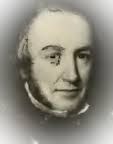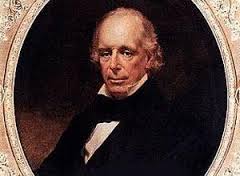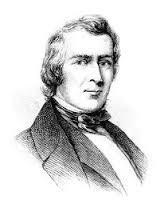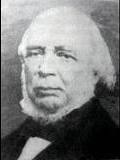
The Sons of John Stevens
By: Tom Frascella June 2014
In writing the history of San Fele and the immigration of its sons and daughters to America a convergence of events between “old world” and “new” will naturally begin to take shape. In the 1850’s a number of events begin to unfold in Italy intensifying the push of people out of Lucania. At the same time a number of events unfold in America which will ultimately entice San Felese resettlement specifically in New York City, northern New Jersey, central New Jersey and Buffalo regions of the country in the 1860’s- 1870’s.
The United States of the 1850’s was a relatively “new” country with great potential and staggering if difficult to reach natural resources. To reach those resources a transportation network had to be created and had to overcome formidable natural barriers. Most of the U.S. population existed east of the Appalachian Mountains, which was the first barrier that needed to be breached. The solutions to the inherent transportation infrastructure needs were in many cases solved in uniquely American ways. Nevertheless those solutions required great labor resources. Immigrant labor often met those labor needs. Indeed, as the story of the San Felese immigration unfolds transportation projects provided work opportunities for many of our ancestors. Because of this I have chosen to profile a number of American inventors and industrialists who are important to the establishment of the early U.S. transportation network The actions of these individuals lead both directly and indirectly to job creation and employment opportunities. Many of those who I will profile while critically important to the development of early U.S. transportation have over the course of time become under appreciated for their accomplishments. Therefore I am pleased to highlight their accomplishments here and acknowledge their genius.
In September of 2012 I profiled John Stevens (1749-1838). I am not going to repeat his profile here but would encourage those interested to reread the September article. In essence Mr. Stevens was not only a major developer of both steam powered ships but also steam powered land locomotion. Having said that, he also contributed by developing companies which brought those conceptual devices to practical application by developing transportation networks.
The infrastructure needed to bring economically efficient steam powered transportation to early, largely undeveloped 18th century America was more than could be accomplished in one man’s lifetime. Fortunately, Mr. Stevens had eleven children, a half dozen of whom were sons. Several of his sons followed him in his dream of improving transportation and its delivery of an efficient transportation system to the masses. As a result I will profile four of his sons and their accomplishments in this article.
James Alexander Stevens (1790- 1873)

James Stevens graduated from Columbia College first in his class in 1808. Like his father he continued his studies in the area of law, however he never practiced. As may be recalled from the earlier John Stevens article originally John Stevens and Robert Livingston in partnership developed and intended to operate a steam ferry system between New York and New Jersey as well as up the Hudson River. Together through their formidable political connections they managed to obtain exclusive rights from the State of New York. Eventually friction developed and the partnership dissolved with Livingston and Robert Fulton retaining the exclusive New York franchise 1806. Undeterred Stevens planned to develop a steam ferry franchise between Philadelphia and Bordentown New Jersey. He succeeded in securing the necessary State franchises and was ready to launch his enterprise in 1809. The critical element in the project was the design and building of the steamship in John Stevens Hoboken shipyard. The ship was named the “Phoenix” and at 100 feet was the most advance steam powered vessel in the world. Stevens directed that the vessel be driven from Hudson Bay to Philadelphia for service making the vessel the first steam powered vessel to sail upon and Ocean.
Stevens however did not give up his ambition to control the ferry route between Albany New York City and Philadelphia. Eventually in1813 a challenge to the exclusive routes granted by New York State to Livingston and Fulton was made by a consortium of business men including Thomas Gibbons and James Stevens, the son of John Stevens. This group had acquired federal coastal navigation rights and the challenge took on the form of the first preeminence challenge of Federal rights over State s rights. This dispute would eventually lead to the Federal landmark case known as Gibbons vs. Ogden. In this suit decided in 1824 Federal preeminence of the Commerce Clause was established. This would have major legal impact on the development of commerce in the U.S. Along with their success James Stevens is considered a founder of the steamboat service that then dominated the Hudson River line between Albany and New York City. In the next year1825 the Erie Canal system opened. With the opening of the canal system the first major water based transportation system in the U.S. came into being. As the system developed it would provide access for industry to raw materials from New York and Pennsylvania west of the Appalachian Mountains. This system then provided the breach of the first natural barrier to U.S. expansion westward. Eventually as the system further developed it would link the East coast to the Great Lakes through Buffalo. James Stevens therefore played a critical early part in the development and success of this system and the industries that evolved thereafter.
John Cox Stevens (1785-1857)

John Cox Stevens was the eldest son of John Stevens and is best known as the “sportsman” of the family. Nevertheless his sporting interest did not stray far from the family interest in transportation. Although the family developed many of the key elements of power water locomotion and steam powered rail lines John Cox Stevens’ attention was drawn more to the elegant grace of wind based sailing and horse racing. An 1803 graduate of Columbia he once served as President of the Jockey Club and was instrumental in setting up the Great North-South Horse Breeders Match of 1823. Southerners of the time took great pride in boasting of superior horse breeding stock so it created quite a regional stir when the northern horse entry won the race.
As I also mentioned John had a keen interest in competitive sailing, designing with his brothers a number of yachts during his lifetime. He was a founding member and first Commodore of the New York Yacht Club. He was also a founding member of the syndicate that built and sponsored the ninety foot schooner “America”. In 1851 the “America” challenged a yacht sponsored by the Royal Yacht squadron. A silver trophy was put up by the British. The trophy represents the oldest international competitive trophy in the world. The subsequent race between the two yacht clubs was won by the American schooner and the trophy has been known as the “America Cup” in honor of the name of the first winning vessel.
On the business side John ran the steamboat ferry service line from Hoboken to New York City. The service yard is where the Stevens’ steamboat “Phoenix” was designed, built and launched.
Robert Livingston Stevens (1787-1856)

Robert L. Stevens was the second son of John Stevens. Early on he developed a love of tinkering on mechanical devices and frequently aided his father in building various mechanical devices in their Hoboken workshop. Of all of the sons of John Stevens, Robert was the most mechanically gifted and inventive. Like all of the Stevens’ brothers he attended Columbia College however, he did not graduate choosing instead to immerse himself in the mechanical workshops of his father’s enterprises. It is known in his mid teens he aided his father in the building and launching of their first experimental steam powered boat in 1804 “The Little Julianna” .The “Little Julianna” was the prototype and experimental model that lead to the design of the “Phoenix”. Robert was a major help in the design and launching of the 100 ft. Phoenix from Hoboken in 1809 and had dropped out of college to devote himself fully to the ships design and construction. Once the Phoenix once launched had to be transported from Hudson Bay to the Delaware River where it would begin ferry service. This necessitated not only taking this new and untried vessel on a several hundred mile journey but also taking out to sea. In 1809 Robert Stevens age 22 captained the first powered steam ship on open seas. This adventure was not without many dangers and weather did force the ship to seek shelter for several days in Barnegat Bay but Robert successfully reached his destination.
Robert Stevens considered himself, first and foremost, a naval architect and engineer. As such he is recognized as the most inventive and advanced naval architect of the first half of the 19th century. Among some of his early nautical advances; He designed the first concave waterlines on a steamboat, called a waveline 1808. This concept was incorporated into the design of the Phoenix. He developed concept of supporting iron rods for guard beams on ships in 1815. He was the first to develop steamboat engines to burn anthracite coal in a cupola furnace 1818. Developing technology that could burn anthracite coal efficiently created a market that did not exist. Thus the U.S. coal industry was born and the Erie Canal which would access the great coal reserves of Pennsylvania was created.
In 1822 he substituted lighter wrought –iron for cast iron on the walking beams of his steamboats, and in the same year he developed the first spring pile ferry slip and placed boilers on guards outside of the paddle wheels. In 1824 he applied the first artificial blast to steamboat furnaces. He then went on to improve speed and efficiency designs while designing the steamboat “New Philadelphia” with a false bow. In 1827 he conceived the “hog frame” or truss to strengthen his ships longitudinally and in 1828 added steel bearings in the paddle wheel shafts.
Like his father Robert was an American patriot and had watched in dismay as his young country had almost fallen under British dominance in the War of 1812. Robert became convinced that the solution to countering British naval superiority was to create a steam powered “ironclad” warship. He and his father were the first to propose this to the U.S. Navy. Unfortunately, the navy ignored their proposals for twenty years.
In the late 1820’s his father began to develop plans for a new enterprise, a steam powered rail line to run north south through New Jersey. The enterprise would become known as the Camden Amboy railroad. Again relying heavily on the engineering expertise of Robert, he arraigned for Robert to go to England. In 1830 the U.S. had few if any rolling iron mills which are necessary to produce cast iron railroad track. In addition the most powerful steam train locomotives were being made in England. Robert’s task was to travel to England to purchase track and to access the power of the engines and purchase one. In typical Robert Stevens form while in transit he conceived of a whole new design for the track, one which would make engines and cars far less likely to derail. His invention, which he did not patent became known as the “H” rail and is the standard used world wide. Many experts suggest that the “H” cast iron rail design of Robert Stevens was the early inspiration for the first cast iron “I” beams.
Upon his return to the U.S. the Camden-Amboy railroad line immediately began to construct an experimental rail line in Bordentown. At the time railroad rails constructed worldwide were built on granite supports anchored by spikes. Robert supervising the construction of the experimental track found that the granite for the supports could not be quarried fast enough for his project needs. He switched to construction using a gravel bed on which he laid wooden cross beams. He designed a clamping mechanism to attach the rails to the wooden beams. This was the first time such construction had ever been used, again it became standard worldwide. In the meantime the engine arrived from England, unassembled and without an assembly manual. Under Robert’s supervision the mechanics at his Bordentown steamboat workshop assembled the engine making a number of modifications and improvements in the process. The engine originally to be called the John Stevens after his father was eventually called the “John Bull”. The engine would remain in service, with modifications for over seventy years. Today fully restored to its original design it is on permanent display at the Smithsonian Museum in Washington.
Among some of his other Rail locomotion improvements was designing and introducing the “cowcatcher” or pilot on the front of the engine and increasing the number of drive wheels on the engine from four to eight.
But as I said Robert’s first love was naval architecture. In 1837, shortly before John Stevens’ death, the U.S. Navy finally awarded a contract to develop an “ironclad” vessel to the Stevens’ company. Robert immediately began working on the design in his Hoboken workshop. However the project would remain under development and unfinished for the rest of Robert’s life. Interestingly the project remained unfinished not because Robert could not design an ironclad such as the now famous Merrimack or monitor but rather because he was trying in a sense to design a ship that had both features combined. Like many things he did he was working on design, technology and application all at the same time. He was working on gun mountings, air tight compartments, and flooding and air pressure discharge to raise and submerge the profile of the ship in combat. In short he was bringing naval architecture and design to places beyond the standard or design limits of his contemporaries of his day. Eventually, around 1850 the Navy voided the contract. The Stevens family however continued to pour their own resources into furthering the design. After Robert’s death in 1856 his brother Edwin kept the project alive and produced a simplified version of the vessel which was sold to the U.S. coastal service and did see service during the Civil War.
I should note that during the 1830’s and 40’s Robert also worked on sailing yacht designs. In fact in the 1840’s he designed and built a yacht which was considered the fastest in the world at that time. Robert’s yacht had actually beaten the yacht “America” a year before the first “America Cup” race.
Among Robert’s other contributions to the U.S. armed forces was his invention in the 1840’s of the artillery percussion shell.
Robert died in Hoboken New Jersey in 1858.
Edwin Augustus Stevens (1795-1868)

Edwin was born the sixth of eleven children of John Stevens in Hoboken NJ. Although inventive in his own right his father recognized that Edwin had the greatest managerial skills of his many children. While still in his twenties John Stevens placed Edwin in charge of the day to day management of the Stevens’ many interests and their vast land holdings in Hoboken.
The management of the vast Stevens enterprise must have been an awesome responsibility for so young a man. Interestingly the year the corporate management responsibility was placed on him coincides with the last years of his mechanical inventiveness. In that year Edwin is credited with designing the Stevens’ plough which for the next several decades was the preferred farming plough used in New Jersey. He also designed a two horse dump carriage for New York City.
As manager of the Camden-Amboy railroad Edwin is credited with completing the rail line connection between Philadelphia and New York City. He also is the Stevens sibling that completed the ironclad that went into service during the Civil War. So in a sense Edwin was the finisher for the projects his inventive father and brothers started.
Most notably Edwin is known today as the Stevens that donated upon his death the land and an endowment for the establishment of a college in Hoboken N.J. It was then decided by the Trustees of the foundation for the college that because of the many inventive accomplishments of the Stevens family that the college should be dedicated to the study of engineering. The college became known as Stevens Institute of Technology and as America’s first college dedicated to mechanical engineering.
© San Felese Society of New Jersey